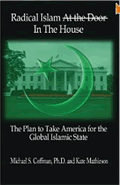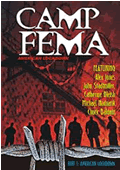PART 2
By Thomas R. Horn
December 13, 2014
NewsWithViews.com
When America's Most Notorious Criminals Came Face to Face with God
NWV EXCLUSIVE NEW INVESTIGATIVE SERIES
(Based on research during the writing of Redeemed Unredeemable)
PART TWO - CASE STUDY, SUSAN ATKINS
On
August 9, 1969, just after eight o’clock in the morning, Winifred
Chapman, personal maid to Hollywood actress Sharon Tate, began the
day as any other. Heading through the gate at the edge of the elaborate
celebrity home at 10050 Cielo Drive, she noticed a fallen telephone
wire and, with uneasiness, made a mental note to check to see if the
phones in the kitchen were operating 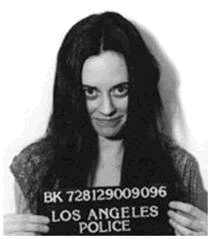 properly
before beginning her duties. She paid no mind, however, nor felt any
alarm, upon observing the unfamiliar vehicle in the driveway, as it
wasn’t unusual for Tate to have guests. Making her way inside,
Chapman stopped briefly at the corner of the garage to turn off the
switch to the outside light; someone had evidently left it on the
previous evening. Once in the kitchen, Chapman lifted the receiver
to the extension phone, and her anxiety increased upon finding that
the line was dead. Looking to alert the others present of her discovery,
she walked into the next room.
properly
before beginning her duties. She paid no mind, however, nor felt any
alarm, upon observing the unfamiliar vehicle in the driveway, as it
wasn’t unusual for Tate to have guests. Making her way inside,
Chapman stopped briefly at the corner of the garage to turn off the
switch to the outside light; someone had evidently left it on the
previous evening. Once in the kitchen, Chapman lifted the receiver
to the extension phone, and her anxiety increased upon finding that
the line was dead. Looking to alert the others present of her discovery,
she walked into the next room.
There was no preparing her for what she would see there.
Pools of blood were splattered everywhere, all over the floor and walls, the clear evidence of intentional brutality. The door to the yard hung wide open on its hinges, revealing a bitterly chaotic and splashy trail of red to the cold body on the grass outside. Chapman’s survival instinct kicked in quickly, adrenaline carrying her back out through the house the way she came in, and once again past the unknown car in the driveway. Upon closer inspection, the vehicle revealed a second body: a lifeless young driver, slash wounds in the palm of his hand and four bullets in his chest and abdomen.
Unable to cohesively articulate what she had found, Chapman fled to the houses in the surrounding neighborhood, shouting, “Murder! Death! Bodies! Blood!”[ii]—still completely unaware of the three other victims, whose famous, lifeless bodies ornamented the Manson Family crime scene in and around the Bel Air home.
Victims of a Pointless Crime
The murders at the Tate residence were some of the most notorious in criminal history. One cannot Google-search the episode without his or her computer screen being flooded by gruesome stab scenes and disturbing images of cruel murder, as well as textual accounts of the incident that go into more detail than most people are comfortable reading. Even merely a general overview of what took place that night has most people shaking their heads.
However, it is not the viciousness alone that rocketed this case into the media overnight and has kept it in popular news since. The victims of the heinous acts were none other than:
• Sharon Tate (aged 26), American model and rising starlet of The Valley of the Dolls (Film director Roman Polanski, Tate’s husband, was absent from the home working on a movie in Europe; he had requested that Tate keep company with her in case she went into labor, eight and a half months pregnant at the time of the murders.)
o Stabbed in the living room (after pleading that her assailants spare the life of her unborn child, as it was later revealed)
• Jay Sebring (aged 35), famed celebrity hairstylist and founder of Sebring International Hairstyling Corporationo Shot, then stabbed, in living room
• Wojciech Frykowski (aged 32; known more often as “Voytek Frykowski,” as spelled in the Helter Skelter book by Vincent Bugliosi, the prosecuting attorney during the Manson Family trials), Polish actor and writer
o Escaped to the yard; tackled; bludgeoned by the blunt end of a gun; and stabbed on lawn• Abigail Folger (aged 25), Folger Coffee Company fortune heiress, civil rights activist, popular socialite, and well-known charity volunteer
o Escaped to the yard; tackled; stabbed on lawn
• Steven Parent (aged 18), young man who, although not yet famous, tested at near-genius levels in electronics and had a very bright potential future (Parent was only at the Tate residence to visit with the caretaker who lived in the guesthouse, and to attempt to sell him a Sony radio; his involvement in the killing spree was tragically circumstantial and coincidental, as he was just leaving the property when he was confronted by Charles “Tex” Watson [more about “Tex” later], a member of the Manson Family.)
o Shot behind the wheel of his car in the driveway
America wept. The death of a pregnant actress as beautiful, talented, up-and-coming, and charismatic as Tate, and her famous company that night (along with an all-American boy in the wrong place at the wrong time), would have been a heartbreaking headline by itself. But the sheer violent nature of the crime scene during the era of flower girls, hippie love, peace signs, and harmony with the earth at the social core of our country was downright offensive and alarming. Well before the details of the Manson Family trials (including the LaBianca murders, which we will discuss later in the Charles “Tex” Watson case study) had reached full exposure, there was a unanimous verdict in the minds of the nation. America thought of this group as a circle of deranged hippies hailing from a ranch in the middle of nowhere, dropping drugs like candy, and listening to a psychotic and self-proclaimed Jesus Christ/devil-man telling them to kill people. The gavel was down. They were guilty.
As history reports, the state of California held the same opinion; the defendants were convicted with charges of murder and conspiracy of murder and sentenced with the death penalty. (Later, in 1972, the California Supreme Court abolished the death penalty for the state as a result of the People v. Anderson case [wherein the court ruled that capital punishment was a violation of constitutional rights[iii]], automatically converting the Manson Family defendants’ sentences to life in prison. Later that year, Proposition 17 amended the state constitution, once again reinstating capital punishment,[iv] but by this time, the life sentences for the Manson Family were solid, which is why they were allowed to live out the remainder of their natural lives and even attend parole hearings for their potential release.)
The Manson Family
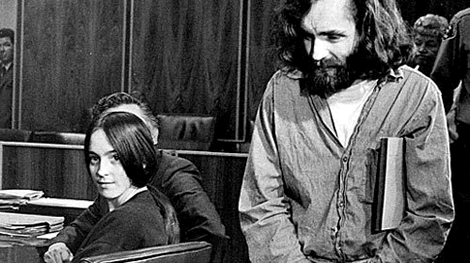
Susan Atkins, Charles
Manson During Trial
In order to speak specifically about a single member of the Manson Family, which is the purpose of this case study, some reflection is required as to the man Susan Atkins was following and the “family” she was a part of. The Manson Family was, from the outside looking in, a rotating-welcome-door, free-love group from the ’60s numbering at around twenty or thirty at any given time, twirling around in big fields of wheat in bell-bottoms, blowing soap bubbles and hugging trees, and living on a diet of lettuce and granola at the Spahn Ranch in California. Deeper down in the pocket of crazy, unseen by the public until the trials, however, they showed violence from the beginning, even amongst themselves.
Documented cases before, during, and after the murder trials show that the Manson Family was not as peaceful or innocent as they looked. Reports include various drug-related disturbances, involvement with the “Straight Satans” motorcycle gang, spiking food with drugs to silence witnesses, setting fire to vehicles, and even carrying out a string of killings known as the “retaliation murders” after Manson’s guilty verdict. (To add to this are recent claims of many other potential murders at Barker Ranch and the canine digs that suggest there are human remains yet to be unearthed there.[v]) When one thinks of the Manson Family murders, it is natural to immediately remember the Tate/LaBianca cases, but Manson and members of his “family” were suspected of, linked to, and—in some cases—officially convicted of the murder or attempted murder of several other persons.
Among these, just to name a few whose names are more popularly associated with the Manson Family, were:
• Bernard “Lotsapoppa” Crowe, who threatened to kill everyone at the ranch in response to a drug-fraud conspiracy formed by Charles “Tex” Watson and was later shot in his apartment by Manson, but barely survived• Gary Hinman, who was rumored to obtain a monetary inheritance that Manson sent his followers (among whom was Bobby Beausoleil) to garnish and, when he did not produce the money, was held against his will for two days until Manson appeared, struck him in the ear/cheek with a sword, and then ordered Beausoleil to kill him• Ronald Hughes, Leslie Van Houten’s attorney in the Tate/LaBianca trial who wouldn’t allow her to testify on Manson’s behalf and who disappeared during a trial recess, his body to be later found wedged between two rocks in Ventura County• James Willett, temporarily framed by Family members in a robbery and in an attempt to keep him quiet was forced to dig his own grave, then shot and buried, and whose wife was shot and buried in the house basement where Manson Family members were living in Stockton• US President Gerald Ford, who survived the attempted assassination by Manson disciple Lynette “Squeaky” Fromme as she was apprehended before the gun could fire• Others, including the mysterious “Jane Doe No. 59,” whose stabbed body found at an embankment is yet unknown, but has been identified by a Spahn Ranch worker as a young girl who had been present with the Family prior[vi]
Upon
an initially charming invitation to the Manson Family’s community,
many came for a passing stay at the ranch and left shortly afterward
on pleasant terms with their new acquaintances, only having needed
a place to “crash” for a while until they could resume
their life plans. Others remained, found comfort as a member of a
new family, and began seasoning their minds with drug-induced, peculiar
mantras and group circles under the tutelage of Charles Manson, the
Jesus Christ/devil-man, himself. Manson would begin with talk of hugs
and self-sacrifice for thy fellow man and, upon establishing trust
and providing excitement (and access to drugs), would then gradually
introduce seemingly righteous-minded schemes of justified violence.
(Note that there is some diversity in the accounts of how often, and
how passionately, Manson claimed to be Christ or the devil. His direct
or indirect involvement with the murders, drugs, and what kind of
materials he covered in his enlightenment teachings are also debated
constantly. The world will likely never have all the answers. When
moments within the case studies require that we give details to paint
a picture the reader can understand, we have referred to what Manson’s
followers’ claims were when they are the only witnesses and
what the lengthy court evidence documents reflect during trial when
something was considered provable by the courts. We have omitted some
points that seem most based on conjecture with little substantiation.
In certain instances, we have cited Manson’s own words directly,
which you will read in the following pages. We have cited our sources
throughout 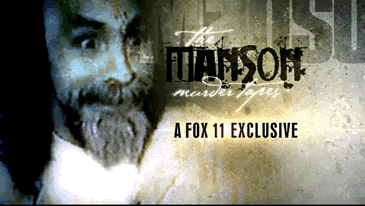 accordingly.)
accordingly.)
The Triple Motive: Futile Insanity in Its Purest Form
If you’re currently asking about the purpose of all this killing, be warned that you won’t likely get an answer that completely satisfies the curiosity of anyone with normal, sane expectations. If you reflect on the consolidation of all the details of all the killing and all the strange behavior, you’ll find that there simply wasn’t a moment in the life of anyone closely involved with the Manson Family during this time who existed on the same plane as normal, everyday people who live normal, everyday lives. It wasn’t as simple as, “They were high the night it happened and things got out of control.” We are talking about multiple, deliberate, planned murders by a drugged cult whose members’ idea of a motive for killing can be as simple as, “We needed money,” all the way to the complicated, masterminded, villainous, and apocalyptic “Helter Skelter.”
Keeping our focus on the Tate/LaBianca murders only, however—and again, not expecting these to appear rational—there were three motives: 1) “Helter Skelter”; 2) Manson’s musical-career revenge; and 3) freeing Bobby. The first of these is the hardest to explain.
Motive One: “Helter Skelter”
Manson either personally believed or manipulated his followers into thinking he truly believed that the world was about to face a racial war on the heels of the black/white tension of that era. Manson endearingly named this war “Helter Skelter” after the song made famous by the Beatles (much more about Helter Skelter in the following case study). In Manson’s prophecy, (again, this is according to testimonies by his Family members), anyone of a black race was going to rise up against anyone of a white race in a long-simmering retaliation of what had been historic racial persecution. During this time, the Manson Family would be safely installed in a secret, underground safe house below Death Valley until the war was over. The black race would win, entirely eliminating anyone who was not black, but, according to Manson, evidently a racist himself, the black leadership would be inherently inferior and would therefore not know how to handle the power.
This is the narcissistic point of the prophecy where Manson would rise up and “scratch [the black man’s head] and…tell him to go pick the cotton and go be a good [black man],”[vii] essentially now becoming the white king of the new world. Now, Manson and his Family, by this time reaching numbers near one hundred fifty thousand, would be the only ones left alive from the white race other than the Beatles (whose music and lyrics inspired much of Manson’s ideas), and the black race would be again returned to slavery under his rule.
This war, Manson predicted, would begin in the summer of 1969, and the musical album that he and the Family would produce would not only make Manson and his followers popular public figures prior to the war (likely so that their emergence from Death Valley later would acclaim them as even more of a leadership people over the new world), but the lyrics to the songs on their album would also carry subliminal messages of this race tension, thereby triggering the actual war in the first place. Despite Manson’s multiple efforts to gain financial backing for his apocalyptic album, it never came to fruition. (Note: There was an eventual release of his album, LIE [see next case study], though it was somewhat unrelated and unsatisfactory to the Helter Skelter cause. The desperation for money is the most likely motive for the aforementioned murder of supposed monetary inheritor, Gary Hinman, whom the Manson family killed without any proof that the inheritance ever existed beyond rumor.)
When the race war didn’t begin as Manson had prophesied, this being the event that he had come to fulfill (claiming to be Jesus Christ[viii] in the Second Coming, although he later allegedly proclaimed to be the devil[ix]), he would need to trigger the event in a different way.
Naturally, the sudden and messy blood-splattering of innocent (albeit wealthy and high-profile) white people was going to be the upshot that hurled the world into the black-versus-white conflict. This is, of course, assuming that the Manson Family could effectively make it look like the murders were carried out by someone of black descent with no other motive than to retaliate against the supremacy of the white man (thus explaining the racially implicating evidence that had been left at crime scenes, cryptic political messages written in blood, etc.). (This logic has so many flaws, one doesn’t even know where to begin. In a sense, the African-American race had essentially just won a war of a nonphysical nature in obtaining their freedom.
Certainly
a kind of oppression still existed and kept them enslaved in a different,
more social way [watch the movie Kelly Green], but this moment in
history was also a great celebration of their newfound freedom, and,
to put it bluntly, it was also a time of walking on eggshells so as
not to upset the apple cart they worked so hard for. Why would this
motive mentality have ever applied at this time? But we digress…
As promised, there is your point of 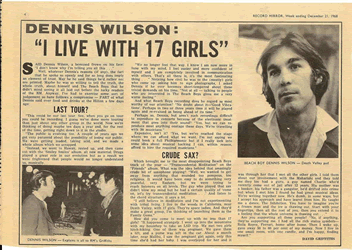 reference
to the first motive, sane or otherwise.)
reference
to the first motive, sane or otherwise.)
Motive Two: Manson’s Musical-Career Revenge
On more than one occasion, Manson had been chased off-property at the Tate residence while Tate and Polanski lived there, having come to find Doris Day’s songwriting son, Terry Melcher, who was the previous resident of the home and who had supposedly (according to members of the Family) made promises to help further Manson’s musical career.
It had started when, in the spring of 1968, Dennis Wilson (drummer and singer in the Beach Boys) picked up a couple of attractive girls who were hitchhiking. These girls were Patricia Krenwinkel and Ella Jo Bailey, members of the Manson Family. After taking them to his Sunset Boulevard home to party for a while, Wilson then left to attend an all-night music recording session. When he returned, a strange hippie was emerging from his home. After asking the man if he intended him harm, the man assured Wilson that he did not, and further greeted him by getting down and kissing his feet.
Wilson and Manson hit it off right away. Wilson liked girls—which Manson had plenty of—and Manson liked money and connections to the musical industry—which Wilson had plenty of. Within months, around twenty-five Family members were living almost full time with Wilson, costing him upwards of $100,000 (around $671,000 in today’s fiscal math[x]) in living costs, including medical bills (many dental bills and, once, the treatment of a sexually transmitted disease) and the repair of destruction of personal property (including his vehicle, which was totaled). During this time, Manson had the opportunity to lay down several recordings in a professional studio on someone else’s dime, which also helped him meet and greet other established names in the industry, among whom was Terry Melcher, who lived in the big, beautiful house at 10050 Cielo Drive.
Later, Melcher had relocated and the home had been inhabited by Sharon Tate. Manson had gone looking for Melcher and, when finding nobody at the residence but Tate, her photographer, and the owner of the home staying in the guesthouse out back (the owner traveled a lot and did not occupy the main house), he was strongly encouraged by the owner to leave the property and not bother the tenants.
Unable to locate Melcher directly, it has been suggested (even in court) that a strong motive of the Tate murders was an act of revenge—not only upon Melcher indirectly as an invocation of fear and a warning of what can happen when one doesn’t follow up on promises made to Manson, but also upon those who would stand in his way of finding Melcher. (Melcher, of course, denied all allegations of leading Manson to believe he would be his connection to fame.)
|
|
Motive Three: Freeing Bobby
The Tate murders happened only days after Bobby Beausoleil was arrested for the murder of Gary Hinman. In testimonies given by the three girls most involved with the Tate/LaBianca murders during the trial, part of the motive for both the Tate and the LaBianca events was to create copycat crime scenes of the Hinman case in order to make it appear that Beausoleil had been wrongly taken into custody in place of the murderer (or murderers) who was still on the loose and guilty of Hinman’s demise. And with that, we have come full circle, back to the night that Tate and her friends met their own.
Tate, Sebring, Frykowski, Folger, and Parent all died upon the sadistic orders of Charles Manson, and by the devoted hands of crazed youths Charles “Tex” Watson, Patricia Krenwinkel, and Susan Atkins, the latter of which this case study will continue to focus upon.
COMING UP NEXT: From Gold Stars in Sunday School to a Life Sentence
TO BE CONTINUED...
Click here for part -----> 1, 2, 3,
© 2014 Thomas Horn - All Rights Reserve
Thomas Horn is the CEO of RaidersNewsUpdate.com and SurvivorMall.com.
Over the last decade, he has authored three books, wrote dozens of published editorials, and had several feature magazine articles. In addition to past articles at NewsWithViews.com , his works have been referred to by writers of the LA Times Syndicate, MSNBC, Christianity Today, Coast to Coast, World Net Daily, White House Correspondents and dozens of newsmagazines and press agencies around the globe. Tom's latest book is "The Ahriman Gate," which fictionalizes the use of biotechnology to resurrect Biblical Nephilim.
Thomas is also a well known radio personality who has guest-hosted and appeared on dozens of radio and television shows over the last 30 years, including "The 700 Club" and "Coast to Coast AM." When looking for a spokesperson to promote their film "Deceived" staring Louis Gossett Jr. and Judd Nelson, "Cloud 10 Pictures" selected Thomas as their spokesperson to explain the Christian viewpoint on UFO-related demonology.
Web Site: RaidersNewsUpdate.com
E-Mail: RaidersNewsUpdate@gmail.com



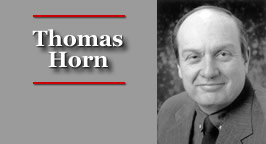

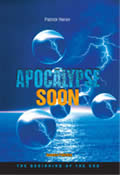




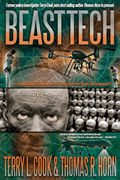




 Share This Article
Share This Article